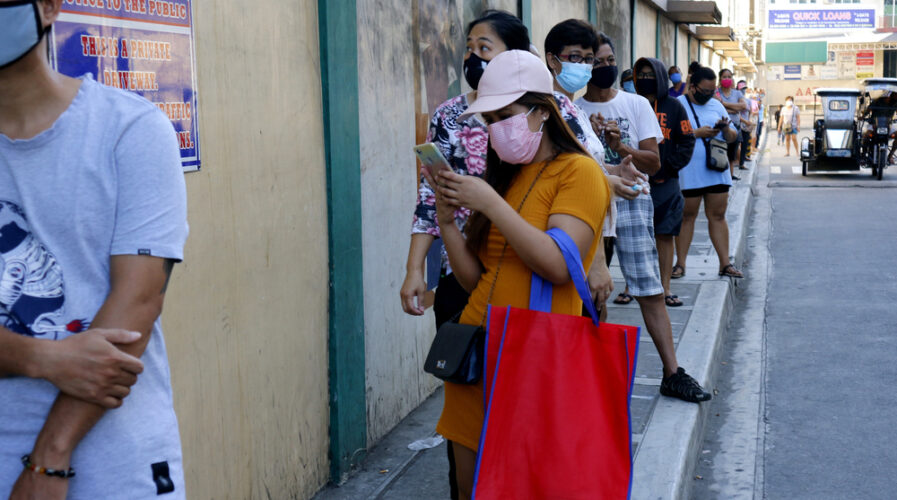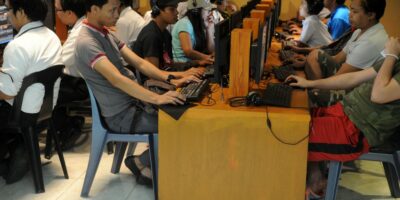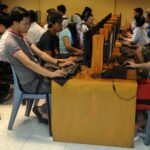
The Philippines is home to a largely underbanked and unbanked population that’s out of reach of traditional banking services — which is what fintechs are aiming to capitalize on( IMG / junpizon / shutterstock)
Fintechs are shattering financial inclusion barriers in the Philippines
Fintechs, as well as neobanks, are banking on the increasing demand for contactless transactions and remote working spurred by the pandemic in order to accelerate the adoption of their services.
Going digital has always been part of the financial inclusion strategy in the Philippines. However, a 2019 survey by the country’s central bank, Bangko Sentral Ng Pilipinas (BSP) found that only 12% of mobile phone owners used their mobiles for financial transactions.
For those with internet access, only nine percent use the internet for financial transactions. A lack of awareness and trust are the main barriers to the majority’s hesitance – barriers that were knocked down hard by the pandemic.
The digital payments outlook
The top mobile wallet in the Philippines has 46 million users as of June 2021, a massive jump from 20 million users in January 2020. That’s one in three Filipinos using the GCash app.
Digital payments are projected to capture the most significant chunk of the local fintech market this year.
According to Statista, the said market is expected to see total transaction values reach US$15.014 million, with users expected to increase to 55.8 million by 2025.
Other areas that fintechs are addressing include financing, insurance, wealth management, financial advisory, and data security.
“Already, the penetration of mobile wallets has exceeded that of bank accounts as fintechs are banking on digital payments to gain a foothold in the Philippine financial system,” Moody’s Investors Service commented in July.
However, it’s a big shoe to fill as 70% of Filipinos do not have a bank account.
A complex socio-economic landscape
A largely underbanked and unbanked population drove the nation to make financial services more accessible through regulations. This drive introduced the basic deposit account (BDA), Philippine Identification System (PhilSys) while embracing digital transformation.
Some notable fintech services available are PayMaya for online payment, First Circle for financing services for SMEs, and Diskartech, the first Taglish (Tagalog-English) banking super app launched by the Rizal Commercial Banking Corporation (RCBC).
“Technological innovations, if channeled the right way, can curtail financial inclusion barriers. Accordingly, the BSP advocates the promotion of financial products and services that are suitably designed, priced, and tailored to diverse market segments, including the unbanked and underserved markets, through pioneering delivery channels,” said Benjamin Diokno, Governor of BSP, in a speech last September.
“We continue to encourage digital innovation alongside key mandates of maintaining monetary and financial stability and the efficiency and safety of payments and settlements systems.” BSP aims to boost the banked population to 70% and have 50% of payments done online by 2023.
Fintechs are seemingly poised for success
Aside from giving the nod to fintechs, the central bank also issued a circular to establish digital banks last year. “Digital banks can help reduce the barriers that hinder financial access, such as the small and irregular income of clients, high transaction costs, geographical distance, and lack of proper documentation,” BSP said.
BSP defines a digital bank, or neobank, as a bank that doesn’t have a physical branch and has at least 1 billion pesos (US$20 million) in capitalization.
The response was so hot that last month it announced a cap on the license awarded to seven banks only: GOtyme, Overseas Filipino Bank, Tonik Bank, Union Digital Bank, UNObank, and two more currently being processed.
No further digital bank applications will be accepted for three years from 1st September. Statitsa projected the average transaction value peruse in the neobanks at US$5,825 in 2021.
“The closure of the application window will allow the BSP to monitor the performance and impact of digital banks on the banking system and their contribution to the financial inclusion agenda,” Diokno explained.
“As these tech-savvy, customer-centric players introduce innovations in the banking sector, we are confident that the BSP is on track to achieving its digitalization and financial inclusion goals.”
READ MORE
- Ethical AI: The renewed importance of safeguarding data and customer privacy in Generative AI applications
- How Japan balances AI-driven opportunities with cybersecurity needs
- Deploying SASE: Benchmarking your approach
- Insurance everywhere all at once: the digital transformation of the APAC insurance industry
- Google parent Alphabet eyes HubSpot: A potential acquisition shaping the future of CRM




